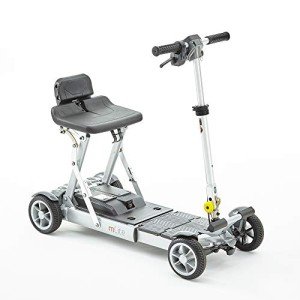An Easy-To-Follow Guide To Choosing Your Mobility Devices

Understanding Mobility Devices: Enhancing Independence and Quality of Life
In today's hectic world, the desire for mobility is universal. Nevertheless, certain medical conditions or age-related challenges can prevent movement, leading to an ongoing look for support. Mobility devices act as essential tools to boost independence, improve quality of life, and enable people to engage totally in their neighborhoods. This post provides a comprehensive summary of mobility devices, including their types, functions, choice requirements, and more.
Kinds Of Mobility Devices
Mobility devices vary from basic aids to intricate equipment, tailored to fulfill different needs. Below is a table summarizing typical kinds of mobility devices:
| Type of Device | Description | Perfect For |
|---|---|---|
| Walkers | Four-legged assistance devices that offer exceptional stability while strolling. | Individuals needing extra support. |
| Walking canes | Single or three-legged sticks that improve balance and support walking. | Those with minor mobility problems. |
| Wheelchairs | Seats installed on wheels, readily available in handbook and electric versions. | Individuals with restricted or no mobility. |
| Scooters | Electric cars designed for outside use and ease of navigation. | Those who can't walk fars away. |
| Crutches | Devices that help people move weight away from a hurt leg. | Individuals recovering from leg injuries. |
| Rollators | Walkers with wheels, seats, and brakes for boosted mobility. | Users needing rest options while strolling. |
| Raise Chairs | Reclining chairs that assist users in standing up and sitting down. | Seniors or those with mobility restrictions. |
| Mobility Scooters | Small electric automobiles for limited mobility, typically utilized outdoors. | People requiring assistance over fars away. |
Key Features of Mobility Devices
When selecting a mobility device, several key features ought to be thought about to make sure optimum functionality and ease of use:
- Weight Capacity: Understanding the device's weight constraint is vital for security and efficiency.
- Adjustability: Devices should be adjustable in height and width to fit the user easily.
- Mobility: Lightweight and foldable alternatives are essential for users who travel or need transportation.
- Stability and Safety: Look for features like anti-tip wheels and sturdy structures to improve safety.
- Reduce of Use: Simple mechanisms and user-friendly styles can make a considerable difference in everyday use.
- Convenience: Ergonomic designs and padded seats can improve the user experience.
Picking the Right Mobility Device
Choosing the best mobility gadget can be a challenging task. Here are some steps to direct the decision-making process:
- Assess Needs: Evaluate the individual's mobility difficulties and daily activities.
- Consult a Professional: Engage health care professionals who can offer recommendations based on the individual's physical condition.
- Trial Options: If possible, trial different devices to figure out comfort and functionality.
- Evaluation Budget: Consider the cost of the device, consisting of any additional functions or adjustments required.
- Research Options: Determine the very best brands and designs by reading reviews and contrasts.
Table: Comparative Analysis of Popular Mobility Devices
| Gadget | Benefits | Disadvantages |
|---|---|---|
| Walkers | Exceptional stability, promotes strolling. | Bulky, might limit motion in small areas. |
| Walking canes | Lightweight, improves balance. | May not provide adequate support for severe mobility concerns. |
| Wheelchairs | Perfect for those with considerable mobility constraints. | Can be cumbersome, specifically in indoor environments. |
| Scooters | Great for outside use, easy to maneuver. | Limited indoor functionality, much heavier. |
| Rollators | Provides rest option, simple to move. | May require more area than standard walkers. |
| Lift Chairs | Comfy, helps transition from sitting to standing. | More pricey, bigger footprint. |
Often Asked Questions (FAQs)
1. What is a mobility device?
A mobility device is any tool developed to assist individuals in moving and navigating their environment. This consists of walkers, wheelchairs, scooters, and crutches.
2. How do I understand which mobility gadget is best for me?
Consider your particular mobility challenges, physical capabilities, and lifestyle requirements. Consulting with healthcare experts can likewise supply customized suggestions.
3. Are mobility devices covered by insurance coverage?
Many insurance coverage plans, consisting of Medicare, may cover specific mobility devices. It's essential to talk to your insurance supplier for specific protection details.
4. Can I rent a mobility gadget rather of purchasing one?
Yes, many medical supply shops and drug stores offer leasings for mobility devices. This alternative is advantageous for people with temporary mobility issues.
5. How can I preserve my mobility gadget?
Regular maintenance is crucial. It includes cleaning up the device, inspecting for wear and tear, and ensuring all parts are working correctly.
The Impact of Mobility Devices on Quality of Life
Mobility devices substantially enhance the lifestyle for people with minimal mobility. portable electric scooters promote independence, motivate social interaction, and enhance access to necessary services and leisure activities.
- Increased Independence: Users can browse their communities, attend events, and engage in hobbies without counting on others.
- Social Engagement: Mobility devices help with involvement in social events, consequently combating feelings of seclusion.
- Boosted Safety: Devices supply stability and decrease the threat of falls, promoting user self-confidence.
Mobility devices are more than just tools for movement; they are entrances to independence and quality living. By comprehending the different kinds of mobility aids readily available, their key features, and factors to consider for selecting the ideal device, people can make educated choices about their mobility needs. Ultimately, the right mobility device can result in a more active, fulfilling life. Whether it's a walker, wheelchair, or scooter, the ideal option contributes substantially to boosting the mobility and self-reliance of users.

